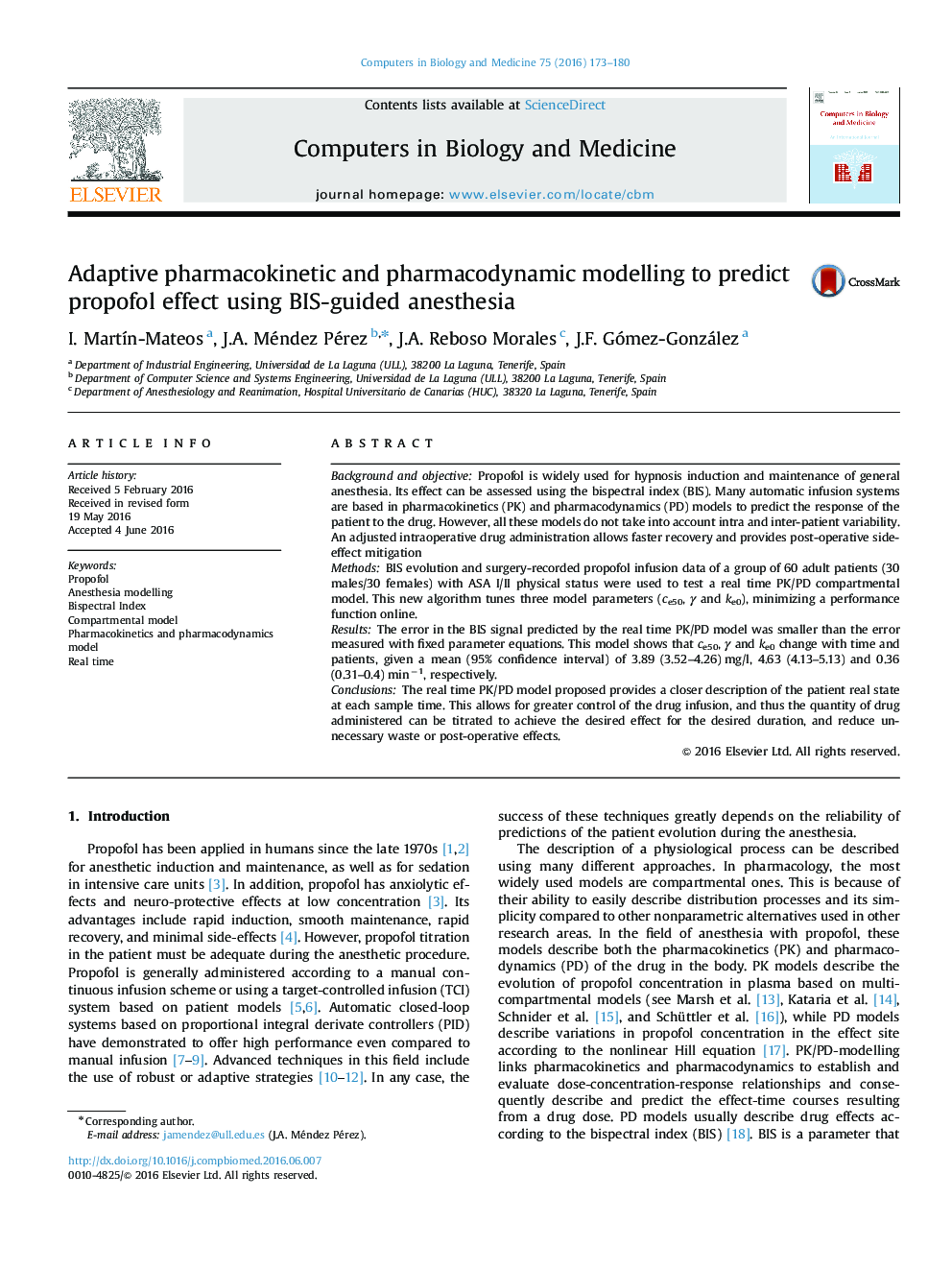| کد مقاله | کد نشریه | سال انتشار | مقاله انگلیسی | نسخه تمام متن |
|---|---|---|---|---|
| 504812 | 864435 | 2016 | 8 صفحه PDF | دانلود رایگان |
• An adaptive method to model the patient response to propofol under general anesthesia is presented.
• The method is intended for the on-line estimation of compartmental model (RT-PK/PD model) for propofol.
• Results obtained show a great improvement compared to existing compartmental modelling techniques.
• The method appears as a useful technique for model based predictive controllers to regulate depth of hypnosis.
Background and objectivePropofol is widely used for hypnosis induction and maintenance of general anesthesia. Its effect can be assessed using the bispectral index (BIS). Many automatic infusion systems are based in pharmacokinetics (PK) and pharmacodynamics (PD) models to predict the response of the patient to the drug. However, all these models do not take into account intra and inter-patient variability. An adjusted intraoperative drug administration allows faster recovery and provides post-operative side-effect mitigationMethodsBIS evolution and surgery-recorded propofol infusion data of a group of 60 adult patients (30 males/30 females) with ASA I/II physical status were used to test a real time PK/PD compartmental model. This new algorithm tunes three model parameters (ce50, γ and ke0), minimizing a performance function online.ResultsThe error in the BIS signal predicted by the real time PK/PD model was smaller than the error measured with fixed parameter equations. This model shows that ce50, γ and ke0 change with time and patients, given a mean (95% confidence interval) of 3.89 (3.52–4.26) mg/l, 4.63 (4.13–5.13) and 0.36 (0.31–0.4) min−1, respectively.ConclusionsThe real time PK/PD model proposed provides a closer description of the patient real state at each sample time. This allows for greater control of the drug infusion, and thus the quantity of drug administered can be titrated to achieve the desired effect for the desired duration, and reduce unnecessary waste or post-operative effects.
Journal: Computers in Biology and Medicine - Volume 75, 1 August 2016, Pages 173–180
